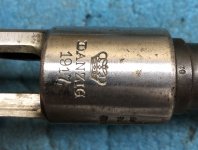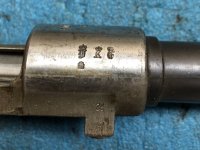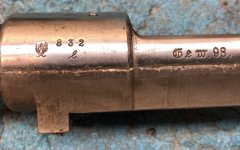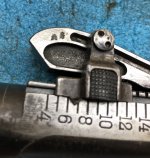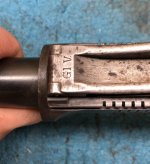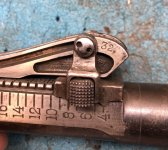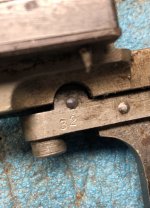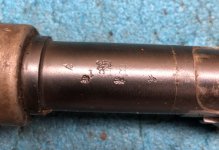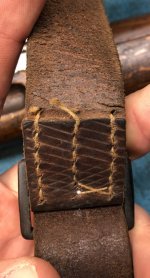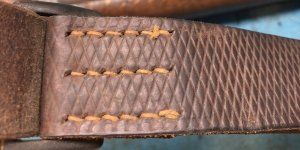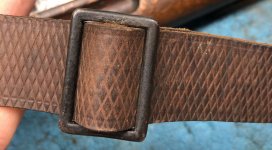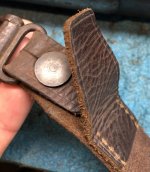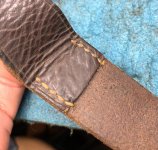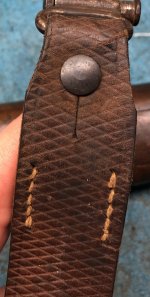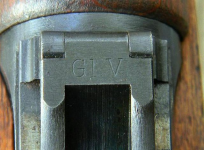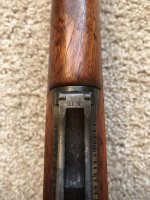Don, this is an incredibly significant rifle. 1. It's the earliest known GL.V. marked rifle form Danzig by over 40,000 rifles. 2. It's the first occurrence of both marked and non marked sights in the same block. This fact has been true of Amberg for sometime now but marked Danzig examples seem to have had a much lower survival rate so this hasn't become evident until now.
A few points of interest, there are two very distinct font styles the left photo is Amberg, the right is Danzig. Each has two different acceptance patterns, Danzig is C/B, Amberg is C/J. C/B is most notably also found on Spandau made rear sights from the 1916 and 17 period. Cyrus first noticed this fact and posed the idea that it's likely Spandau may have had something to do with subcontracting sights for Danzig. Another possibility is part of their inspection team ended up at Danzig post 1917. What's most interesting about this rifle is the font is Amberg, the acceptance is Danzig, and the numbering is Danzig but slightly larger than the rest of the rifle. The meaning of this remains to be seen but this is undoubtedly one of the first rifles to be part of the Gl.V process.
After many discussions with Wolfgang, we both came to the conclusion that the Gl.V marking likely doesn't have a complete link to the Zeiss Glasvisier 16. Rather, the marking identifies rifles that met a high enough standard to be used as sniper rifles either Glasvisier 16 or conventional. When Storz remarks about these being suitable for the Glasvisier, he specifically refers to the Glasvisier 16. I think it's very possible that originally the term Glasvisier just meant glass sight, Zeiss Glasvisier or any conventional sniping optic. These marked guns may have been a pool of suitable rifles that could have been diverted to the optical companies when Danzig and Amberg received orders for snipers. I think the data may be beginning to bear this out, one thing I can say for certain is the marking was omitted on certain rifles for a reason.
View attachment 302831View attachment 302832
